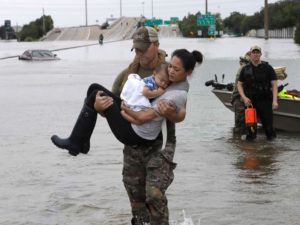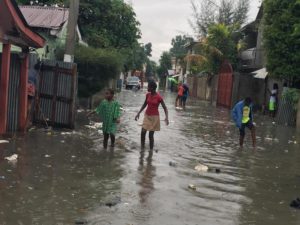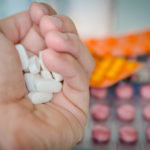How Can External Agencies Best Support Community Resilience After Mass Trauma?
We’ve all seen the photos and news clips from Hurricane Harvey and Hurricane Irma – whitecaps on the flooded Houston freeway, local heroes literally carrying strangers to safety, boats hauling family pets to dry land. Undeniably, the communities afflicted by these historic hurricanes will be rebuilding for years to come.

Many times when mass trauma impacts a community, such as Houston following Hurricane Harvey, outside resources flood in. The government grants emergency funds to help with recovery efforts, and the professionals arrive ready to help, ready to “fix” things. They classify the affected people as in need of their services.
Eventually that money dries up and communities are left to fend for themselves again, oftentimes feeling more helpless when the outside sources they relied on are no longer available. Unfortunately, this marginalizes the natural support system of the local community and isolates people, rather than bringing them together at a crucial time.
There is a way to make this transition smoother. Communities must be empowered so they can embrace their own resilience.
“Families, as the integral unit of the community and the major support of our children, are of vital importance in determining how communities recover in the aftermath of mass trauma.”

Although external resources are necessary after a major crisis, they must support the natural support systems and respect the community’s strengths. Instead of “fixing” a broken system, professionals will do more good by supporting what the community is already doing and capitalizing on the special skills of the community and their leadership.
The LINC (Linking Human Systems) Community Resilience Model (Landau, 2004), provides ways in which communities can prepare, respond, and recover from trauma.
A community’s recovery is stronger when locals can build positive connections by drawing from their inherent resilience. It’s also important for professionals to avoid labeling their behavior as dysfunctional or broken.
LINC believes that by enhancing human connections, people build a sense of continuity with both the past and future. This reminds people of how generations before them have overcome their own troubles and builds a strong sense of solidarity among the community, eliminating “us versus them”.
Another important factor in the LINC Model is the use of Family and Community Links. Links are people who provide a bridge between professionals, families, and communities. They are the people who have natural access to closed communities. They understand the culture and are trusted within the community. Their job is integral to connecting the outside professionals and agencies with the community. Links also ensure that all sides are informed and not holding any secrets.
When community members play a central role in the design of their recovery, the programs have a higher rate of success and help keep communities strong into the future. As outside agencies are brought into hurricane-ravaged areas, they will do a great service to these communities by remembering that each area must be approached differently and appreciated for its own unique skills that make the community great.
If you’re interested in learning more about the LINC Community Resilience Model, you can find more information on the website and also in our LINC® Publications.
Resources:
- Linking Human Systems: Strengthening Individuals, Families, and Communities in the Wake of Mass Trauma
- The LINC Model of Family and Community Resilience: New Approaches to Disaster Response


